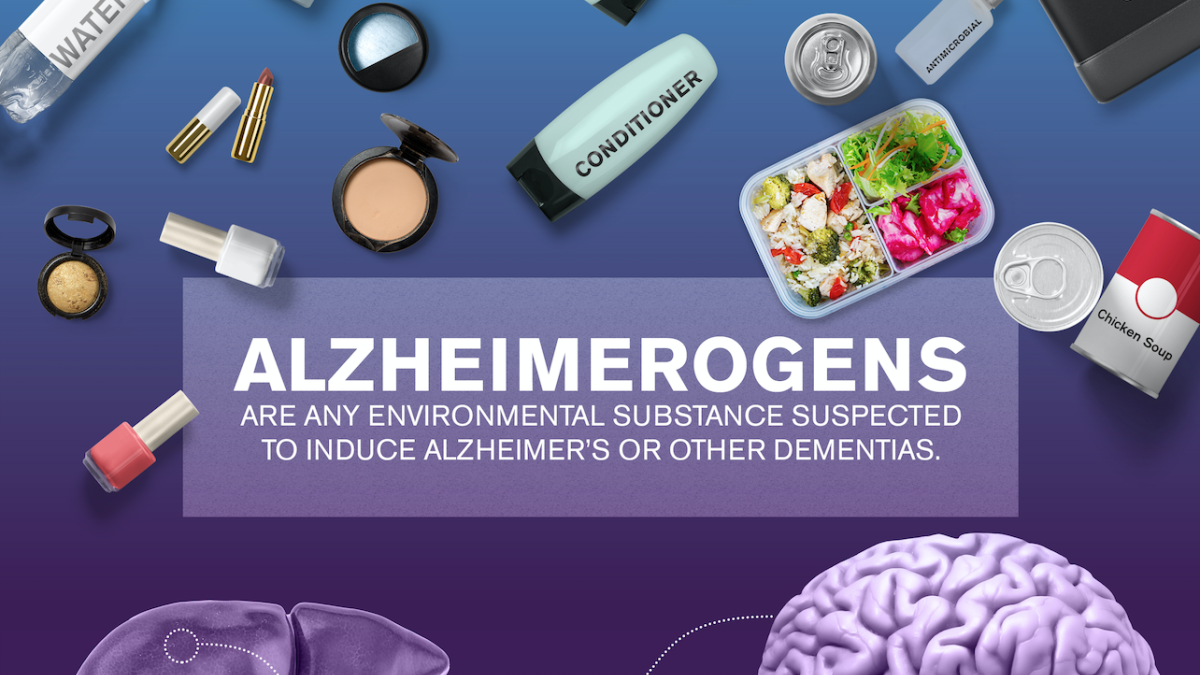Researchers look to toxins in the environment for answers to Alzheimer’s

ASU scientists are studying environmental factors in the onset of Alzheimer's disease.
Can insecticides, industrial and commercial pollutants, antimicrobials, heavy metals and air pollutants contribute to the onset of Alzheimer’s?
As our population ages at a breakneck pace, visions of a society overwhelmed by the sorrows of the “silver tsunami’ strike fear and concern, but answers remain elusive. Researchers across the world continue to search valiantly for answers for Alzheimer’s.
With no clear answers, people are asking, should I take vitamins or supplements? Are there foods I should avoid? Are chemicals in the environment a threat? Do I need to exercise more? Do crossword puzzles? Brush my teeth more often? Does it all come down to genes from my mother or father?
Scientists believe that Alzheimer's is caused by specific genetic changes that virtually guarantee a person will develop the disease less than 1% of the time. The other 99% of cases? Scientists are beginning to believe there may be as many causes and types of Alzheimer’s as there are types of cancer. And the causes may be a combination of genetic, lifestyle and environmental factors.
The incidence of Alzheimer’s is growing along with our aging population. Alzheimer's disease is now a leading cause of mortality in the developed world. Billions of dollars are being spent to try to unravel this puzzle, with the federal government recently increasing funding by $400 million, bringing the research budget up to $1.4 billion.
In addition to genetics, scientists at Arizona State University are looking to inflammation, viruses, lack of nutrients and even air pollution as possible factors in the disease. And with the latest study, the researchers at the Biodesign Center for Environmental Health Engineering are scoping out what they call “Alzheimerogens.” In the same vein as carcinogens, Alzheimerogens are any environmental substance suspected to induce Alzheimer’s or other dementias.
Scientists believe that some man-made environmental compounds can be associated directly or indirectly with Alzheimer’s disease, including various insecticides, industrial and commercial pollutants, antimicrobials, heavy metals and air pollutants. These chemicals, often used for industrial, medical, agricultural and military purposes can persist in the environment long after initial use, causing toxicity to flora and fauna.
“What we know is that genes load the gun; the environment pulls the trigger,” said lead researcher Rolf Halden, director of the Center for Environmental Health Engineering at the Biodesign Institute and senior sustainability scientist in the Julie Ann Wrigley Global Institute of Sustainability.
“With this study, we looked for a smoking gun, but we raised more questions — good questions — than we could answer,” he said. The fact that Alzheimer’s begins long before its symptoms appears also makes it challenging to draw a direct correlation between exposure to toxins and the disease itself. Halden and his team are eager to build on this study.
Some researchers and scientists are shifting attention from genes to the environment, searching for the missing pieces to explain what causes late-onset Alzheimer’s. Research publications have provided convincing evidence indicating the role of environmental contaminants in the development of neurodegenerative disorders. However, there are very few reports that compare the prevalence of Alzheimer’s among genetically similar populations living in completely different environments. The future of Alzheimer’s research relies in part on identifying the environmental risk factors and understanding how to reduce the impact of these risk factors.
Halden’s study, “Assessment of persistent bioaccumulative and toxic organic environmental pollutants in liver and adipose tissue of Alzheimer’s disease patients and age-matched controls” appears in the journal Current Alzheimer’s Research. Halden collaborated with Thomas Beach, senior scientist at the Civin Laboratory for Neuropathology, Banner Sun Health Research Institute; molecular biologists Bhagyashree Manivannan and Manivannan Yegambaram from the University of Arizona; and Samuel Supowit, senior environmental engineer with the U.S. Department of Health and Human Services. Samples were provided by the Banner Sun Health Research Institute Brain and Body Donation Program at the Banner Sun Health Research Institute in Sun City.
Using liquid and gas chromatography in tandem with mass spectrometry, the study measured the concentrations of 11 environmental contaminants in postmortem liver and adipose tissues of Alzheimer’s patients — and in patients without evidence of Alzheimer’s. Toxins included antimicrobial agents, industrial and commercial pollutants and insecticides.
“Our most important finding is that we were able to identify the presence of seven toxins with only one gram of tissue,” Halden said. “It’s exciting to know that it becomes possible to get a pretty solid understanding of exposure on small human tissue samples.”
The study used both liver and adipose tissues from 12 patients with Alzheimer’s disease and 12 without. Researchers found a concentration of the pesticide fipronil (a weed control chemical) in both the liver and the adipose tissue. This is the first study to find high amounts of the flame retardant, TBBPA, in the liver.
Liver and adipose tissue, as opposed to brain tissue, were selected for study because many toxins do not cross the blood-brain barrier. Researchers agree it is important to study it further in nonbrain tissue to gain a better understanding of its role in Alzheimer’s.
“Our study demonstrated the detection of multiple persistent, bioaccumulative and toxic organic environmental pollutants in small sample volumes of human liver and adipose tissue of Alzheimer’s patients and healthy people,” Halden said. “This is the first data we have on how parabens (MPB), insecticides (fipronil) and plasticizers (TBBPA) find their way into human tissue.”
The plasticizer, BPA, found in some sports water bottles, canned foods and plastic food storage containers was identified at higher levels in the liver tissue of Alzheimer’s patients than in previous studies using fetal tissue, indicating the need for additional research.
The toxins examined include plastics like BPA (bisphenol A), pesticides like DDE (a metabolite of DDT) and dieldrin, used for termite control and still found in basements of homes, largely in the Southeast. Other chemicals — a number of parabens found in makeup, moisturizers, and hair care and shaving products — were also identified, along with antimicrobials, triclosan and triclocarbans. Triclosan has been found in brain tissue. In 2016, Halden led a successful movement to ban the use of triclosan and triclocarbans in the U.S.
Regardless of the bans, many of these chemicals — used for industrial, medical, agricultural and military purposes — persist in the environment today. Past studies have drawn a direct correlation between occupational exposure to pesticides and the development of Alzheimer’s and Parkinson’s disease. This new study builds on a 2015 study, Role of environmental contaminants in the etiology of Alzheimer's disease: a review, in which Halden and his team provided an overview of in vitro, animal and epidemiological studies on the cause of Alzheimer’s, highlighting available data supportive of the long hypothesized link between toxic environmental exposures and development of Alzheimer’s disease.
Written by Dianne Price
More Science and technology

ASU professor shares the science behind making successful New Year's resolutions
Making New Year’s resolutions is easy. Executing them? Not so much.But what if we're going about it all wrong? Does real change…

ASU student-run podcast shares personal stories from the lives of scientists
Everyone has a story.Some are inspirational. Others are cautionary. But most are narratives of a person’s path, sometimes a…

The meteorite effect
By Bret HovellEditor's note: This story is featured in the winter 2025 issue of ASU Thrive.On Nov. 9, 1923, Harvey Nininger saw…